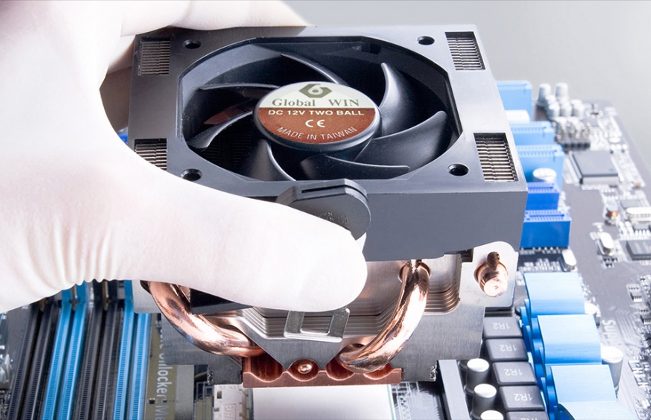There are three criteria in choosing a high-quality CPU Cooler:
- Great heat dissipation function to lower the CPU temperature as much as possible.
- Long life-cycled fans with low noise.
- Well-designed clips to ease up the installment process.
To be more specific:
Great Heat Dissipation Function
While evaluating the effect of heat dissipation, people should not only consider not letting the CPU overheat, but also prolonging the CPU life as much as possible. In scientific terms, CPU life and temperature is an inverse ratio. In other words, they follow the inverse power law model.
The formula is as follows:
A=(Taccelerated / Tnormal)m
A: accelerator T: temperature m: factor
If a CPU continues under a high temperature condition for a long time, that will shorten its life. For example, if m=10, at 25oC degree of normal temperature, the CPU life is around 30,000 hours. But when the temperature has reached 70oC degree, the life will shorten to 7353 hours.
A=[ (273 + 70) / (273+25) ] 10=4.08,
life at 70oC degree would be 30,000 hours / 4.08= 7353 hours
We can see from this that CPU life dramatically depends upon the temperature level. As for the m value, it can be figured out by calculating two life cycles at two different temperatures. For instance: life cycle is 7352 hours at 70oC degree and 6361 hours at 75oC degree will be:
[ (273 + 75) / (273+70) ]m=(7352/6361), then m=10
The general principle to maximize the effect of heat dissipation is to make larger heatsinks with high C.F.M.
Long Life Fans with Low Noise
There are three features for a long life and low noise fan:
- Good motor design: It can be tested by pointing the running fan to make it stop and then rotate the fan toward the same direction again with a low speed. With a poor fan design, the fan will stop running again when meets the "dead point".
- To apply a ball bearing fan instead of sleeve bearing one to extend its life
- The noise problem can be solved by choosing medium-speeded fan instead of high speeded one. However, at the same time, the effect of medium-speeded fans not as powerful as the high-speeded one. The good news is that it can be compensated by creating the ventilation holes on the bottom of heatsink. This design is specially made by Global WIN Technology R&D team and has been approved by the Taiwan Central Standard Organization and granted a patent (Patent number 115376). Then ventilation holes will not only enlarge the heat dissipation area, lessen the weight of heatsink, lessen the air pressure but also increase the air flow. All these will further straighten the effect of heat dissipation.
Well-Designed Clips
A well-designed clip should meet the following criteria:
- Easy to install and dismantle, but not too easy to dismantle to avoid the cooler falling off
- Applicable to all kind of motherboards
- The clip mounting system should be able to pass ventilation and drop tests of motherboards. In order to improve coolers' stability while attached to CPU, it would be an enhanced design to build a leverage on the bottom of heatsink to fit into the gap between CPU and ZIF socket

